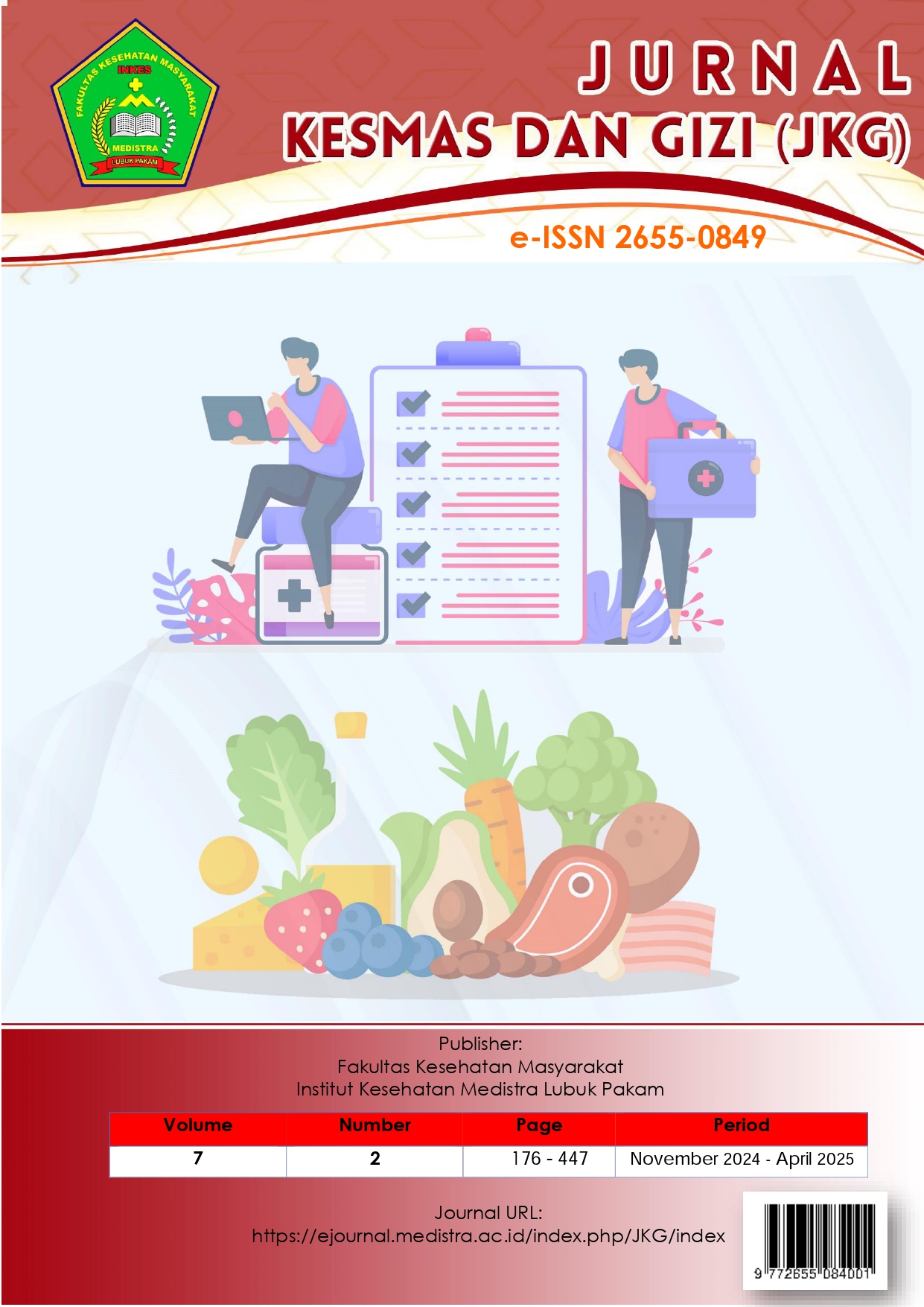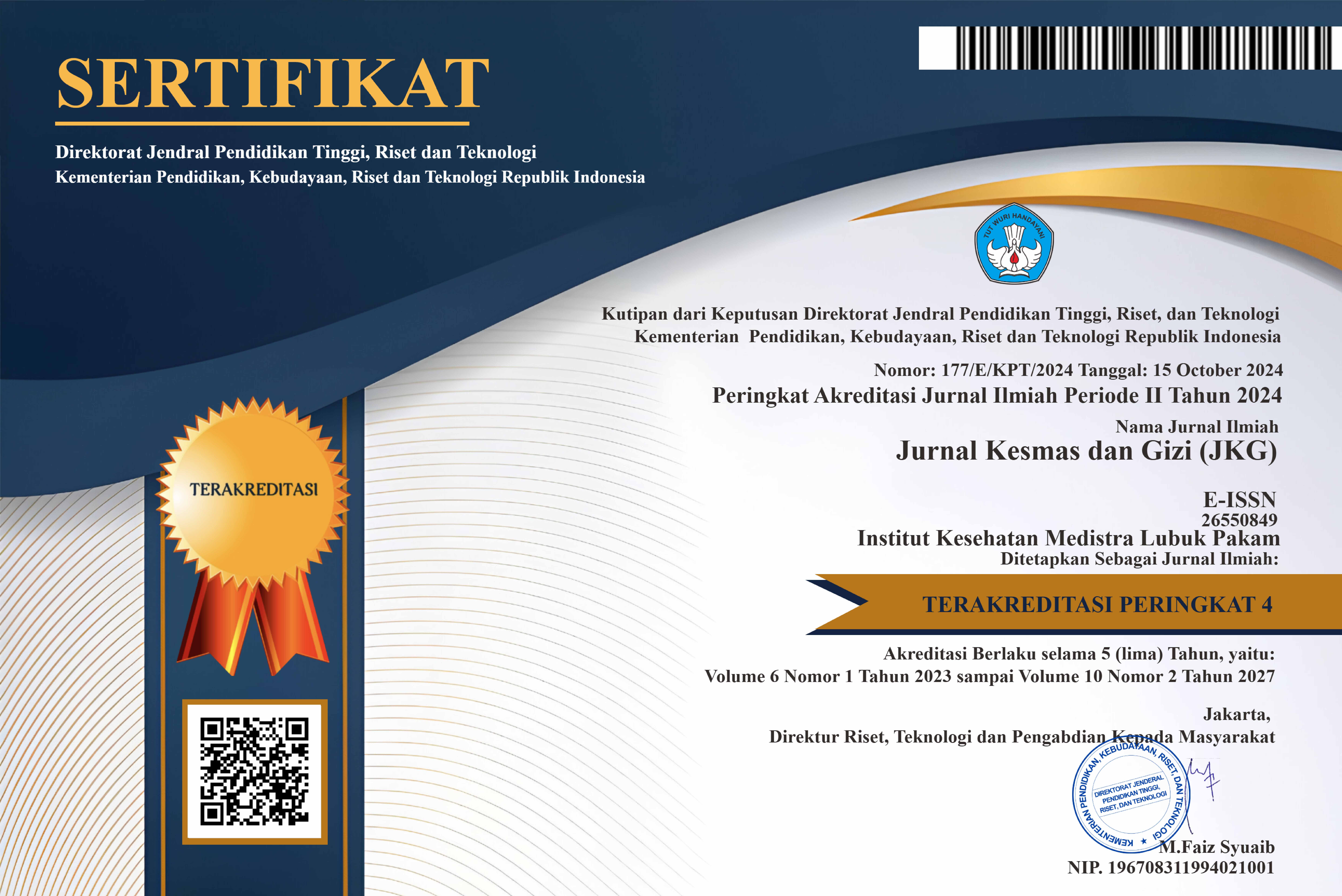Analysis Of Healthcare-Associated Infections (HAIs) Surveillance System At RSUD Drs. H. Amri Tambunan Regional Hospital Deli serdang Regency
Analysis Of Healthcare-Associated Infections (HAIs) Surveillance System At Drs. H. Amri Tambunan Regional Hospital Deli serdang Regency
DOI:
https://doi.org/10.35451/jkg.v7i2.2690Keywords:
HAIsAbstract
Surveillance of Health Care Associated Infections (HAIs) is a dynamic and continuous process of collecting, identifying, analyzing, and interpreting health data. This study aims to analyze the HAIs surveillance system based on input, process, and output components using a mixed-method approach. Phase I (quantitative) assessed input (human resources and infrastructure) and output (epidemiological data and HAIs incidence rates) using secondary data analyzed univariately. Phase II (qualitative) explored input and process components through interviews and FGDs with the IPC team (IPCN and IPCLN), analyzed using thematic analysis. Results from Phase I showed the highest HAIs cases in patients over 41 years, with VAP incidence in February (32.5 ‰) exceeding the standard. Other peaks included non-SC IDO in February (1.58 ‰), SC IDO in April (5 ‰), and phlebitis in March (1.11 ‰). Phase II revealed issues in HR quality, incomplete SOPs, limited infrastructure, and lack of indicators to assess data completeness and accuracy
Downloads
References
M. Roumbelaki and E. Ioannidou, “Prevalence , incidence burden , and clinical impact of healthcare-associated infections and antimicrobial resistance?: a national prevalent cohort study in acute care hospitals in Greece,” pp. 317–328, 2017.
D. Mudjianto, A. Hargono, and A. W. Rosli, “Health Notions , Volume 2 Number 5 ( May 2018 ) Analysis of Healthcare Associated Infections ( HAIs ) Surveillance System at Haji Public Hospital of Surabaya 573 | Publisher?: Humanistic Network for Science and Technology Health Notions , Volume 2 Number ,” vol. 2, no. 5, pp. 573–585, 2018.
N. Di, R. Icu, and R. Masohi, “GLOBAL HEALTH SCIENCE ----- http://jurnal.csdforum.com/index.php/ghs,” vol. 2, no. 1, pp. 24–33, 2017.
E. M. Rosa, Surveillance Infeksi di Rumah Sakit: Konsep dan Implementasi. 2019. [Online]. Available: http://repository.umy.ac.id/bitstream/handle/123456789/34214/Surveillance infeksi di rumah sakit konsep dan implementasi.pdf?sequence=1
S. S. Magill et al., “Multistate Point-Prevalence Survey of Health Care–Associated Infections for the Emerging Infections Program Healthcare-Associated Infections and Antimicrobial Use Prevalence Survey Team * Centers for Disease Control and Prevention (,” N Engl J Med, vol. 370, no. 13, pp. 1198–1208, 2014, doi: 10.1056/NEJMoa1306801.Multistate.
J. A. Al-Tawfiq and P. A. Tambyah, “Healthcare associated infections (HAI) perspectives,” J. Infect. Public Health, vol. 7, no. 4, pp. 339–344, 2014, doi: 10.1016/j.jiph.2014.04.003.
Sugiyono, METODE PENELITIAN KOMBINASI?: (MIXED METHODS), 10th ed. Bandung: ALFABETA, 2018.
K. C. Su et al., “A simplified prevention bundle with dual hand hygiene audit reduces early-onset ventilator-associated pneumonia in cardiovascular surgery units: An interrupted time-series analysis,” PLoS One, vol. 12, no. 8, pp. 1–18, 2017, doi: 10.1371/journal.pone.0182252.
Kemenkes, “Peraturan Menteri Kesehatan Republik Indonesia No.27 Tahun 2017 Tentang Pedoman Pencegahan Dan Pengendalian Infeksi,” Univ. Nusant. PGRI Kediri, vol. 01, no. 857, pp. 1–7, 2017, [Online]. Available: http://www.albayan.ae
Ahsan, Nursalam, and Anita Damayanti, “Penurunan Insiden Infeksi Nosokomial Pasien Pasca Sectio Caesarea di Rumah Sakit Melalui Pelatihan Asuhan Keperawatan Berbasis Knowledge Management,” J. Ners, vol. 8, pp. 202–2010, 2013.
H. D. A. H. Tisyanda, “Faktor – faktor yang mempengaruhi kejadian phlebitis pada pasien lansia yang terpasang infus pada rumah sakit x di kabupaten malang,” UIN Maulana Malik Ibrahim Malang, 2020, [Online]. Available: http://etheses.uin-malang.ac.id/34459/
L. R. Sitanggang, F. Kasim, and R. A. Sirait, “Analisis Pelaksanaan Kewaspadaan Standar Dalam Mencegah Healthcare Associated Infections ( HAI ’ s ) Di Rumah Sakit Umum Wampu Norita Analysis of the Implementation of Standard Precautions in Preventing Healthcare Associated Infections ( HAI ’ s ) at Wampu Norita General Hospital,” no. c, pp. 1–7, 2024.
Y. Li, Z. Gong, Y. Lu, G. Hu, R. Cai, and Z. Chen, “Impact of nosocomial infections surveillance on nosocomial infection rates: A systematic review,” Int. J. Surg., vol. 42, pp. 164–169, 2017, doi: 10.1016/j.ijsu.2017.04.065.
J. C. Hokororo et al., “Training of Infection Prevention and Control to Healthcare Workers of Mining Health Facilities?: A Shared Responsibility for Improving Safety of Mining Communities,” pp. 243–264, 2024, doi: 10.4236/odem.2024.124018.
E. Maria Rosa and M. Ulfa, “Analisis Pengaruh Pemasangan Kateter Urin terhadap Insidensi Infeksi Saluran Kemih di Rumah Sakit,” J. Fak. Kesehat. Masy., vol. 11, no. 2, pp. 121–125, 2017.
S. Takaya et al., “Surveillance systems for healthcare-associated infection in high and upper-middle income countries: A scoping review.,” J. Infect. Chemother. Off. J. Japan Soc. Chemother., vol. 26, no. 5, pp. 429–437, May 2020, doi: 10.1016/j.jiac.2020.01.001.
S. A. Alrebish, H. S. Yusufoglu, R. F. Alotibi, N. S. Abdulkhalik, N. J. Ahmed, and A. H. Khan, “Epidemiology of Healthcare-Associated Infections and Adherence to the HAI Prevention Strategies,” Healthc., vol. 11, no. 1, pp. 1–9, 2023, doi: 10.3390/healthcare11010063.
Downloads
Published
Issue
Section
License
Copyright (c) 2025 Reni Aprinawaty Sirait, Arum Puspita Sari, Rotua Sumihar Sitorus

This work is licensed under a Creative Commons Attribution 4.0 International License.
Copyright in each article is the property of the Author.


























